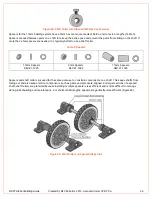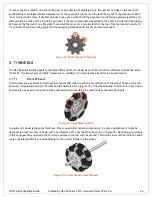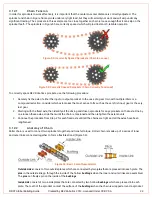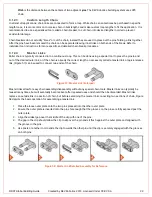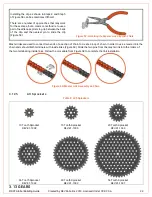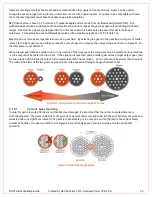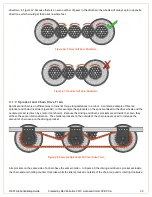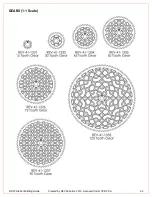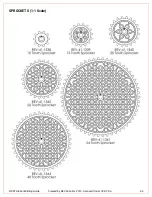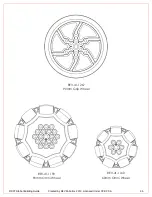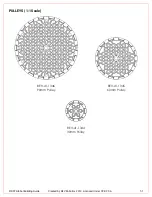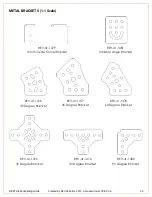
FIRST Global Building Guide Created by REV Robotics 2019, Licensed Under CC BY-SA
38
4
BASIC BUILDING GUIDE
4.1
DRIVE TRAIN GUIDE
4.1.1
DROP CENTER 6-WHEEL DRIVE
When designing a 6-wheel drive robot, it is typically desirable to drop the center wheel by a small amount in order to
improve the turning ability of the robot. There are two straight forward ways to do this using the REV Building System.
In Figure 64, the center wheel is dropped by about 3mm using the
outside wheels. The Indexable motion bracket is easily adjustable in 1mm increments, so the ideal center drop for a robot
design can be determined quickly through testing.
Figure 64: Drop Center Wheel Using an Indexable Bracket
Figure 65 shows an alternate way to create a dropped center wheel using all pillow blocks. The center pillow block has
had the alignment ribs (small bumps on the bottom) sanded down, and then washers or a custom fit piece of plastic sheet
inserted underneath. The bolts hold the pillow block and the washers to the extrusion. The thickness or number of
washers can be changed to adjust the amount of center drop.
Figure 65: Drop Center Using a Shimmed Pillow Block
4.1.2
Geared Drive Train
Idler gears are a good way to transmit power across distances in your robot. An idler gear is any intermediate gear which
does not drive an output shaft. Idler gears are used to transmit torque over longer distances than would be practical by
using just a single pair of gears.
A common example of this is an all gear drivetrain (Figure 66). In this example, the gears on the end are linked to the drive
wheels with one of the center gears being driven by a motor (not shown). The orange arrows indicate the relative rotation
of each of the gears showing that the two wheels are mechanically linked and will always rotate in the same direction.
Because idler gears reverse the direction of rotation, it is important to pay attention to the number of gears in the



